Michelangelo said that when you roll something downhill, anything that doesn’t fall off is sculpture.
— Bill Wainwright
— Arthur Ganson***
.
Some of the sculpture racing pieces below may not be what immediately come to mind for making art sculptures movable or for winning races. Please look at the exemplary works below that think outside the wheel, explore new frontiers in kinetics, and forge ahead into multimedia.
We recommend you start by watching this 1-1/2 minute video that features innovative works from the World Sculpture Racing Society (our founders) in 1987. (WSRS founder Goeffrey Koetsch is interviewed and cycles his racing sculpture at the end of the video.)
The Question of Wheels
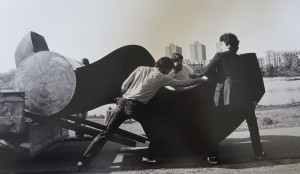
Water Sports, by John Weidman. “A large, very heavy steel abstract form which was pushed by his whole family. It was a piece of art that one would expect to find in a gallery, not on the street. There was nothing ‘vehicle’ about it…actually it was a sort of anti-vehicle which made it all the more appropriate. It was so big and heavy and so hard to move that he always came across the finished line last. For me, that made it conceptually perfect.” — Arthur Ganson
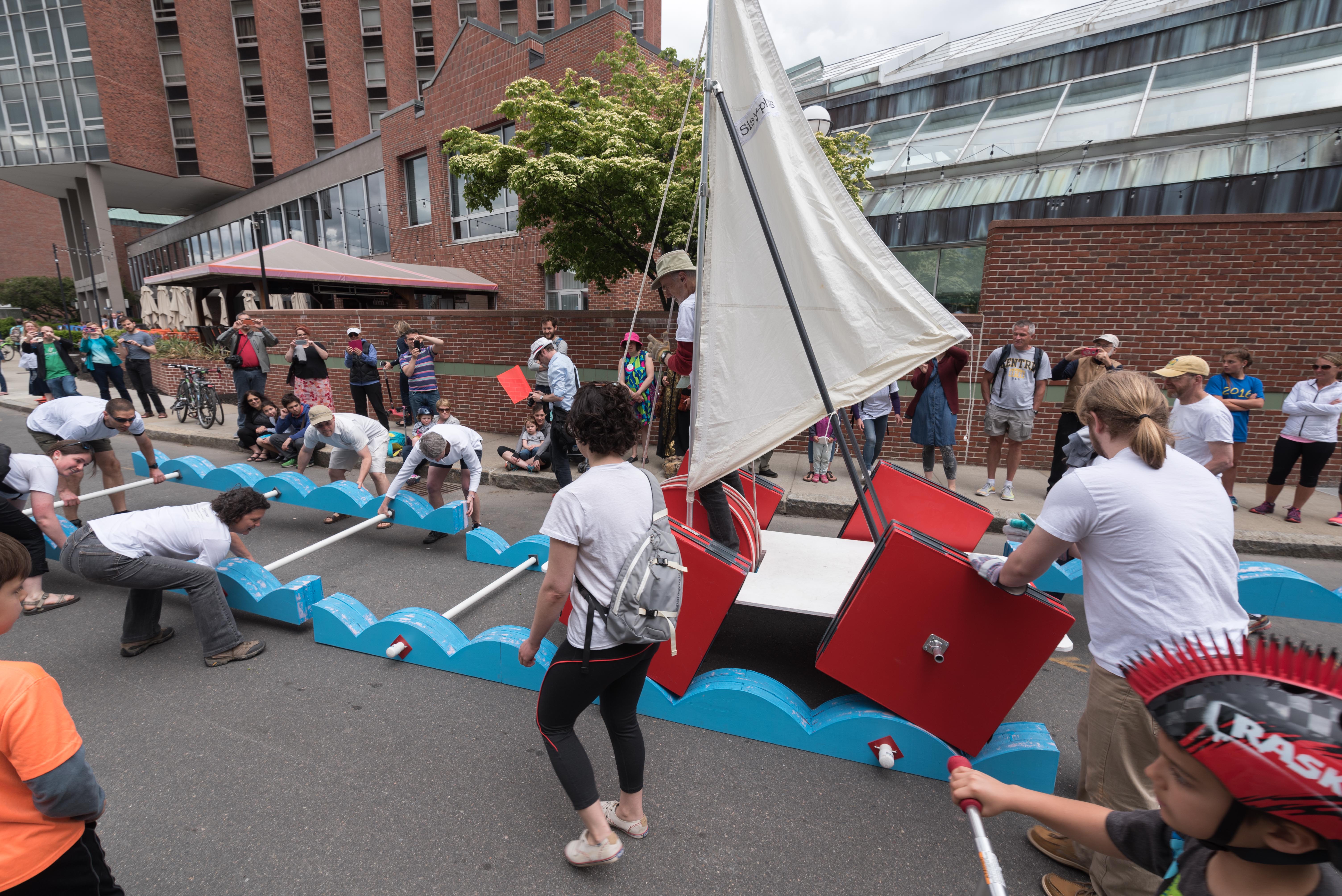
Sisyphus, by the Harvard Physics Team with Kim Bernard, is a contemporary work that moves along on square wheels driven by a rope on a pully pulled by a ‘sailor’ standing on the ‘sailboat’. (Moving the tracks require extensive team footwork!).
Above is a video of the test run of a prototype.
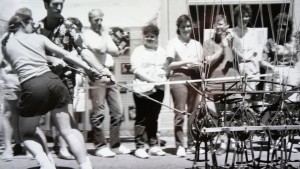
Dodecapede, Arthur Ganson. Featured in video above–which is amazing to behold–walks on a dozen metal feet. No wheels touch the ground. Maybe there aren’t any wheels at all.
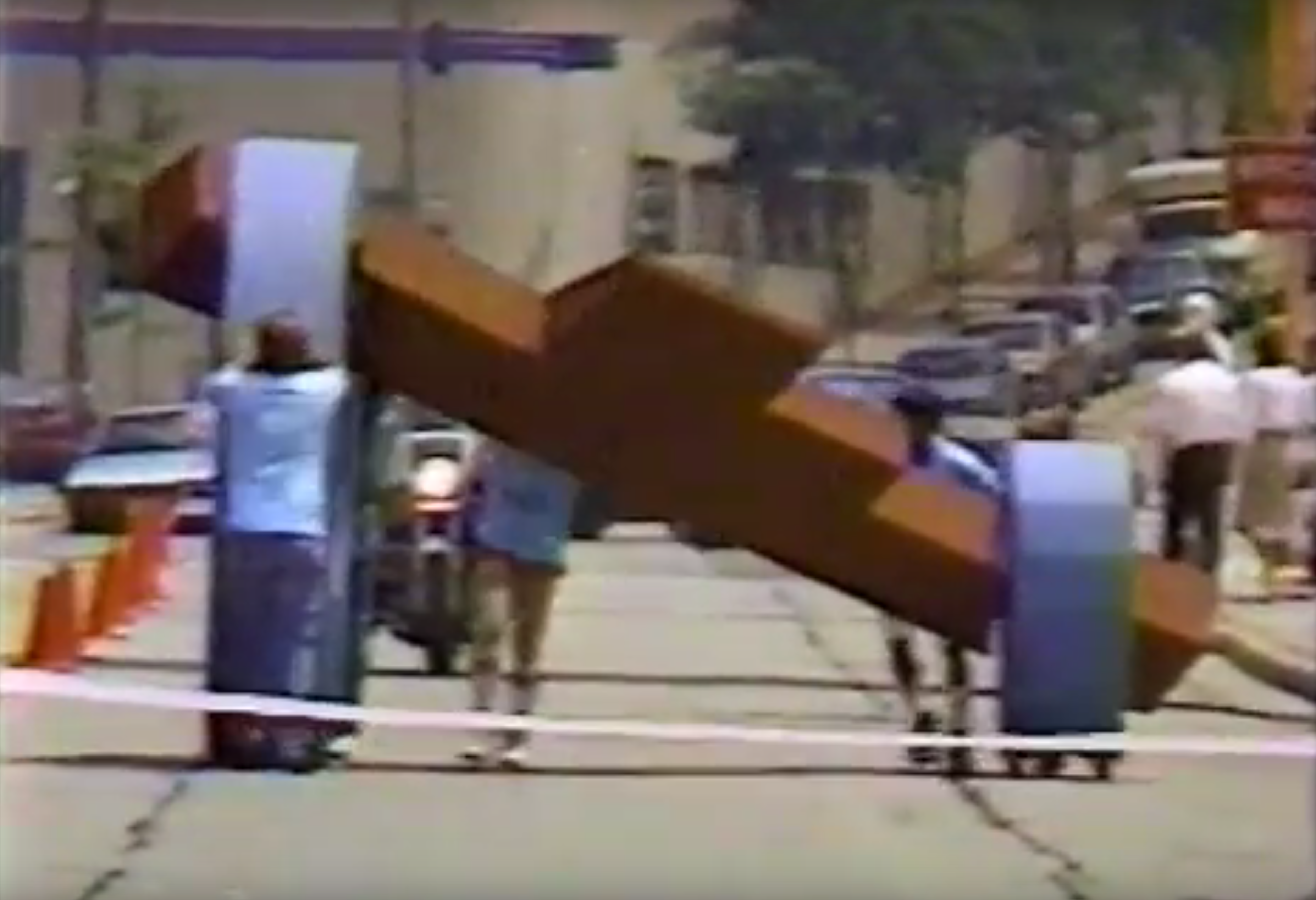
Sloth by Brian Koons (spelling?), featured in video above (also amazing to behold). Note that wheels are of different diameters, so the central copper axle rises and falls on a diagonal as the piece moves forward. This piece won the Milwaukee race despite its asymmetry.
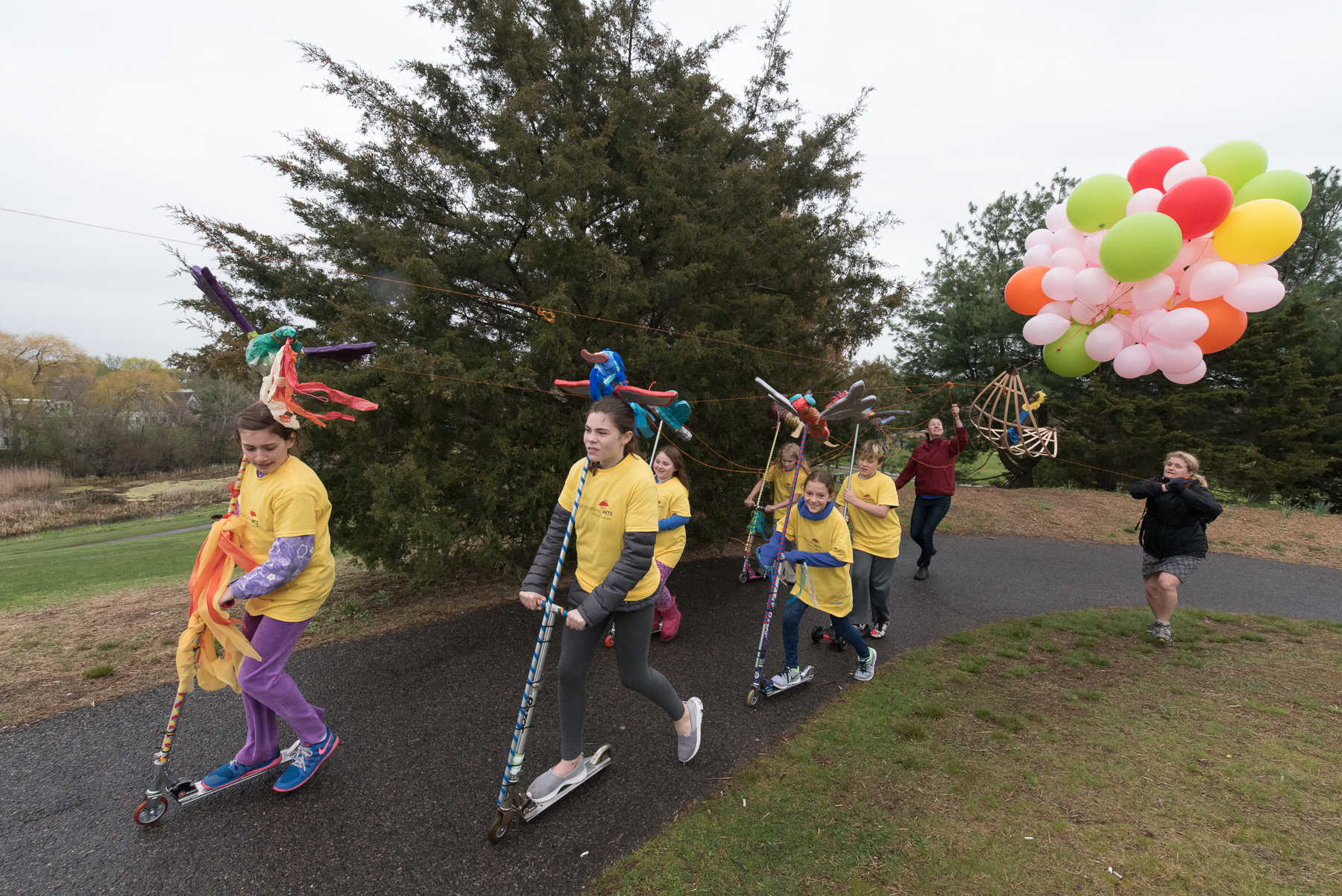
Aesop’s Fabulous Flying Machine by Maude Morgan Arts youth with Haley MacNeil and Mitch Ryerson. Aesop sits in a basket held aloft by helium balloons. Costumed youth pull Aesop along on decorated scooters. Here we have what one might call ‘decentralized’ or ‘distributed’ wheels. Another contemporary work.
Kinetic Concepts (Funky Wheels)
Dodecapede above is kinetic, by which we here mean includes ‘secondary’ parts that move in response to a primary motion. The GIFs below demonstrate a basic approach. On the left, you can imagine that the central axis extends outward on both sides and has wheels attached. When the wheels turn, it affects the non-circular ‘cams’ in the middle, which then cause secondary movements, which can create effects like those on the right. Any number of cams can be driven by an axle and a couple of wheels. Our teachers can help you do it!
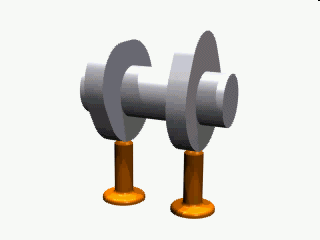
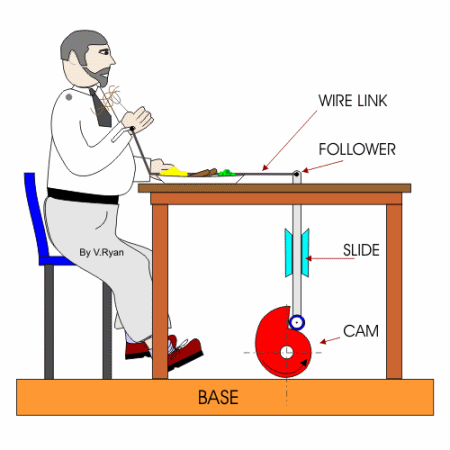
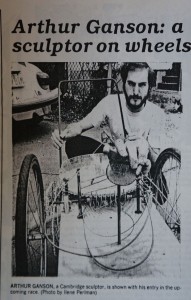
One of the masters of kinetic sculpture is Arthur Ganson, whose piece “Faster” is raced in the video above. An exemplary kinetic work, Faster! also goes high concept in that the work as a whole is a human-machine cyborg, i.e. a feedback loop between artist and work, human and machine. Theoretically it’s an example of a potentially calamitous positive feedback loop. You can see this and other of his works in action at his permanent MIT Museum exhibition.
Here are a few contemporary kinetic sculpture racing works:
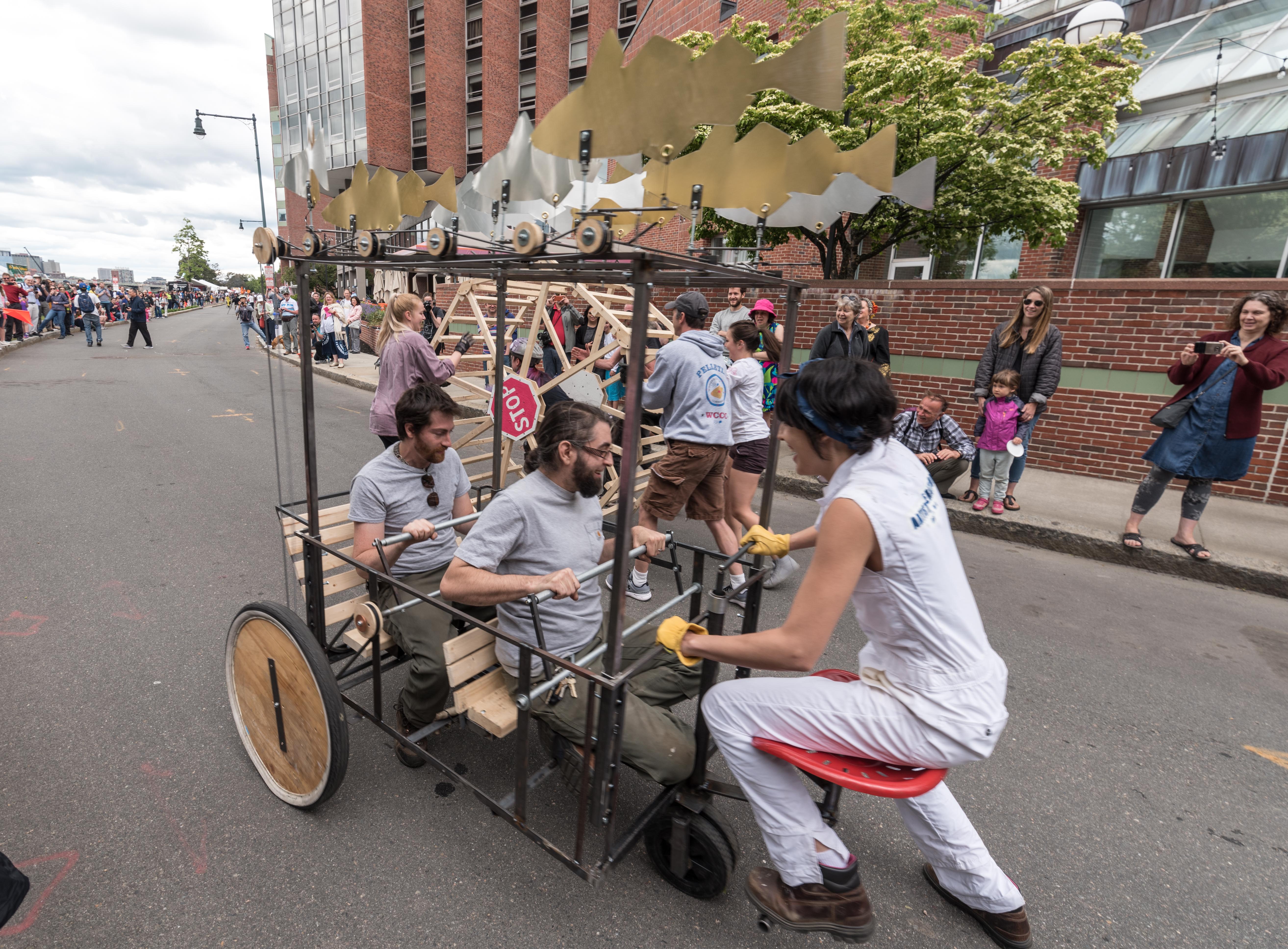
School, by Artist Operation. The main wooden wheels turn a series of pulleys that cause the fish to wriggle.
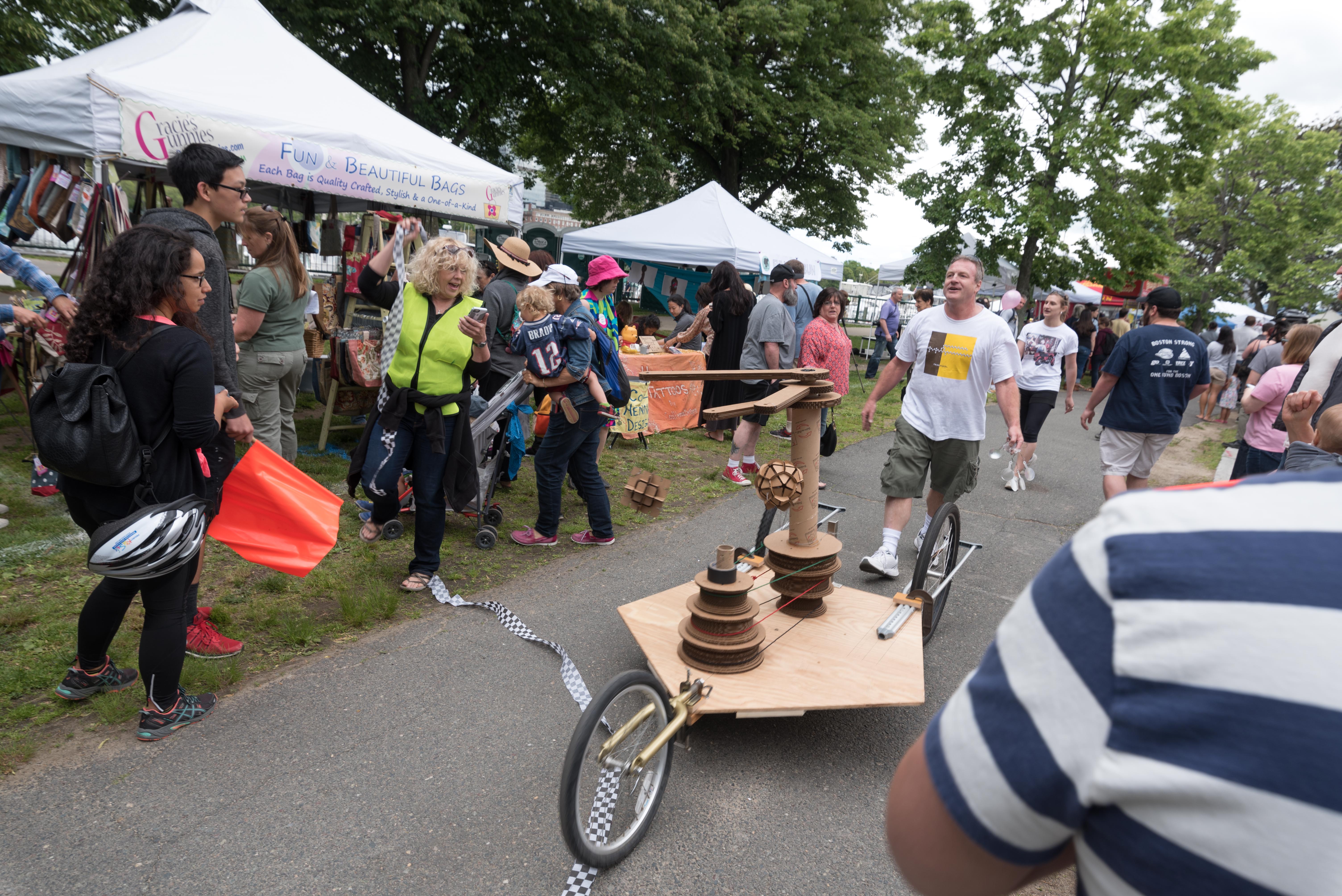
Platonic Solid Orrery, by Daniel Rosenberg. The main wheel makes pulleys turn cardboard cylinders of various diameters, to make cardboard geometric forms ‘orbit’ around the cardboard vertical rod at different rates (to represent the solar system).
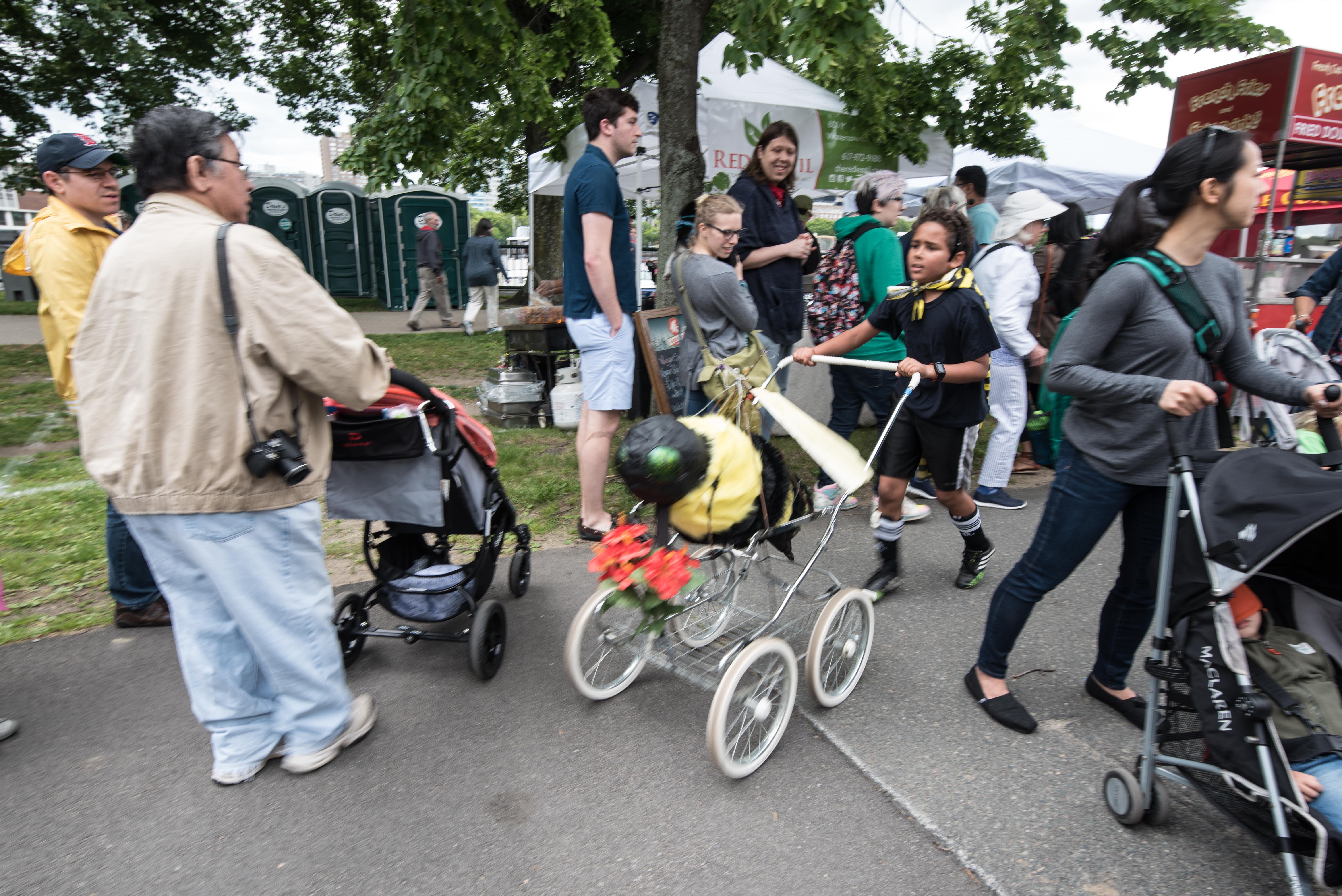
Beeline to the Finish Line, by the Shainker-Freywoht Family. The bee’s wings beat (flap). Originally an entry in the Community Sculpture Race, they applied to enter the People’s Sculpture Race. Jurors decided their engineering plan for making the wings move was iffy, so the granted the family contingent approval. The family participated in a PSR workshop, the bee took flight, and the entry was accepted.
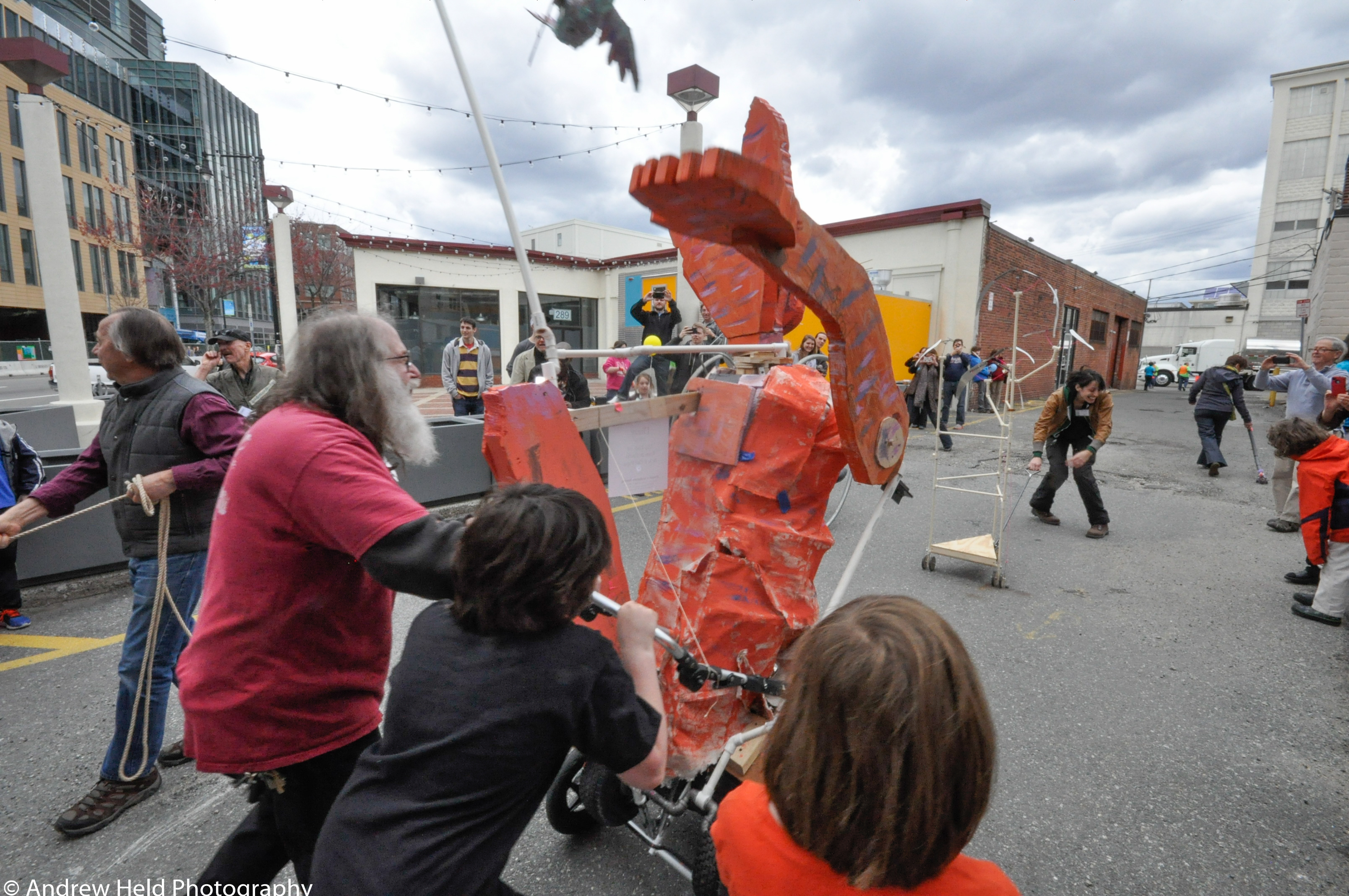
Dizzy the Cat, by Parts and Crafts Youth with Jeffrey DelPapa. The cat’s hand swats at a twirling bird.
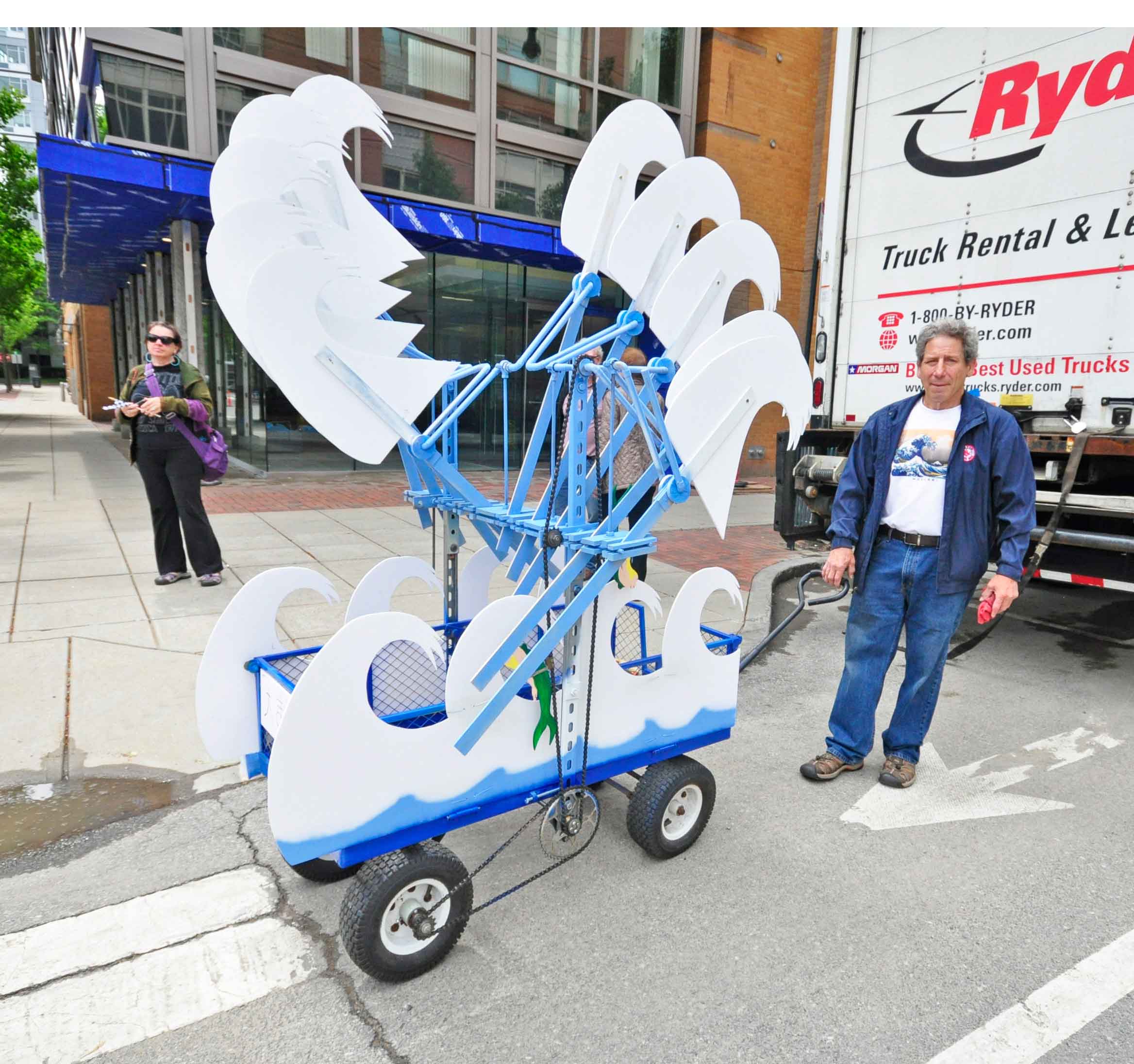
Tsunami Wave Machine (Homage to Hokusai) by Steve Hahn, the main wheels crank a chain that turns cams fixed to vertical rods in turn fixed to diagonal rods that create a wavelike motion. Steve’s work also creates a kinetically-produced tidal noise, as a pulley turns a tube containing shore pebbles.
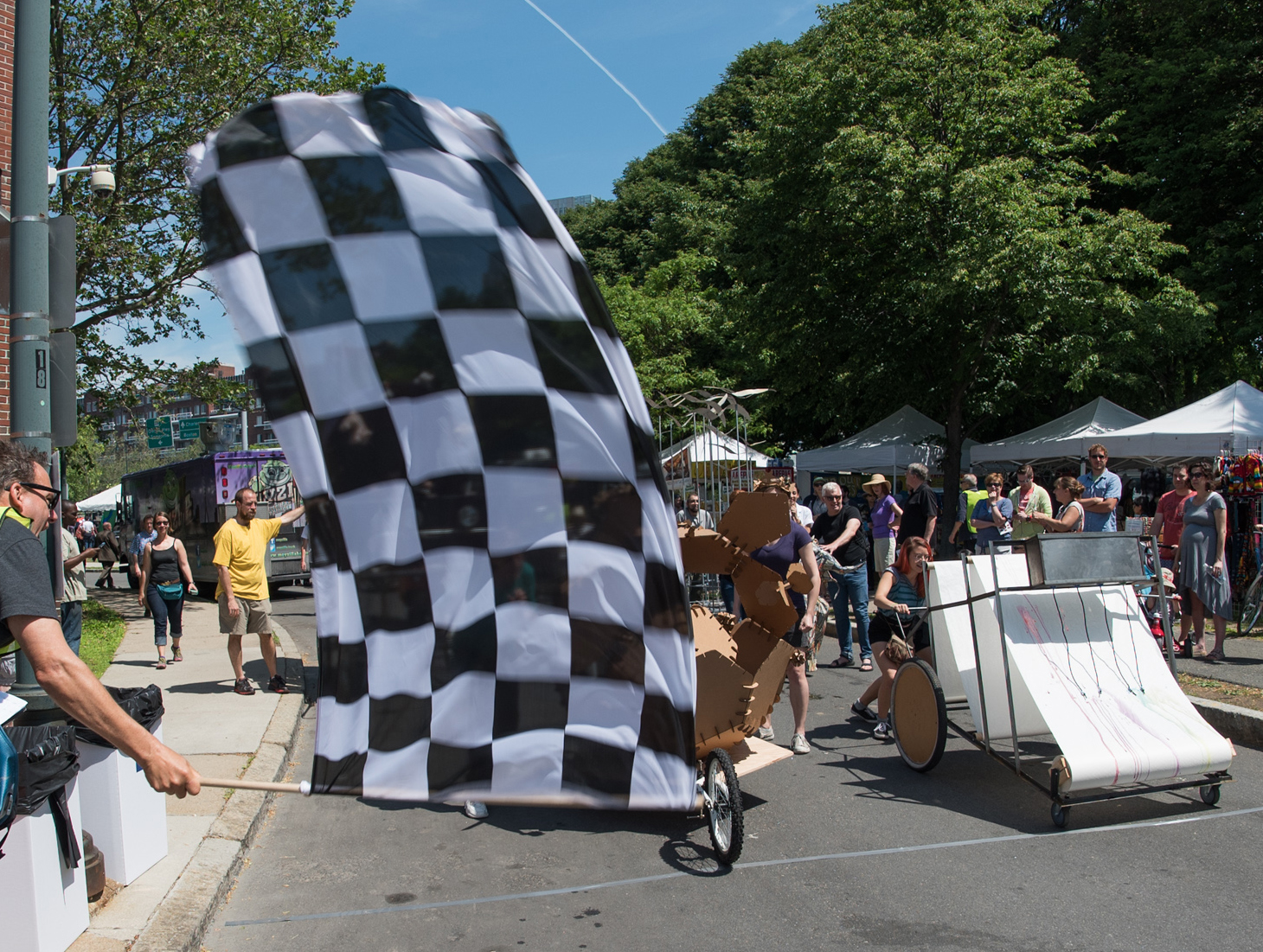
Seismic Cartographer (contraption to the right of the racing flag) is a piece by The Time Based Sculpture Class at B.U. with Dennis Svoronos (Lindsay Chan, Marisa Gilbert, Jia Jian Li, Bastiyan Rodrigo, Jill Rosati, and Kali Vozeh students) . As it rolls along, it kinetically unscrolls a 3′-wide paper roll, and also kinetically prints different colors onto the roll, creating “a real-time, site specific ‘document’ of its travels.”
I found these two links intriguing re approaches to kinetic work:
http://www.technologystudent.com/cams/cam2.htm
Sound
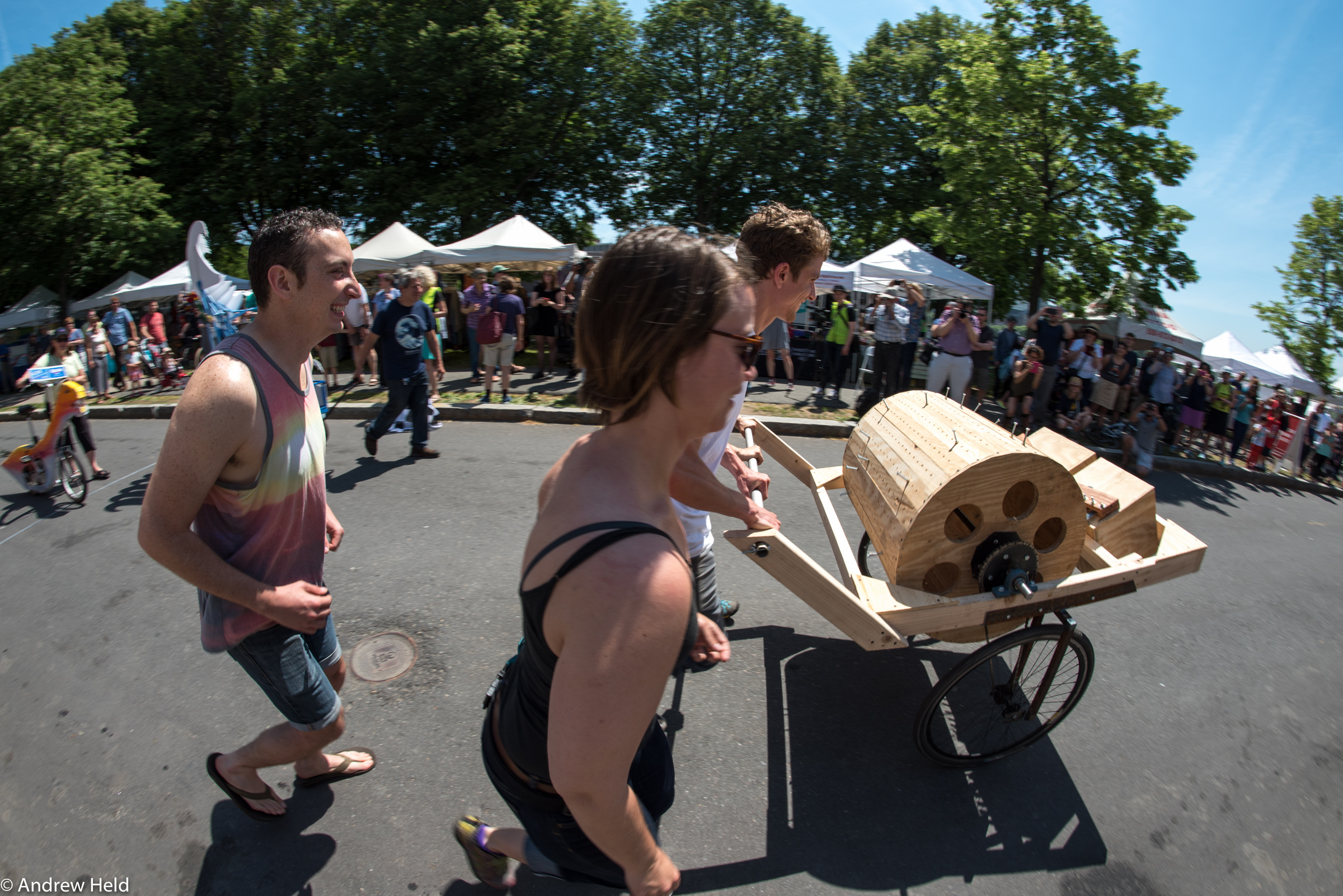
Traveling Music Box by Everything Muffin Collective. The wheels turn a pulley which turns the central cylinder. Nails on the cylinder hit metal tabs, creating a racing music box.
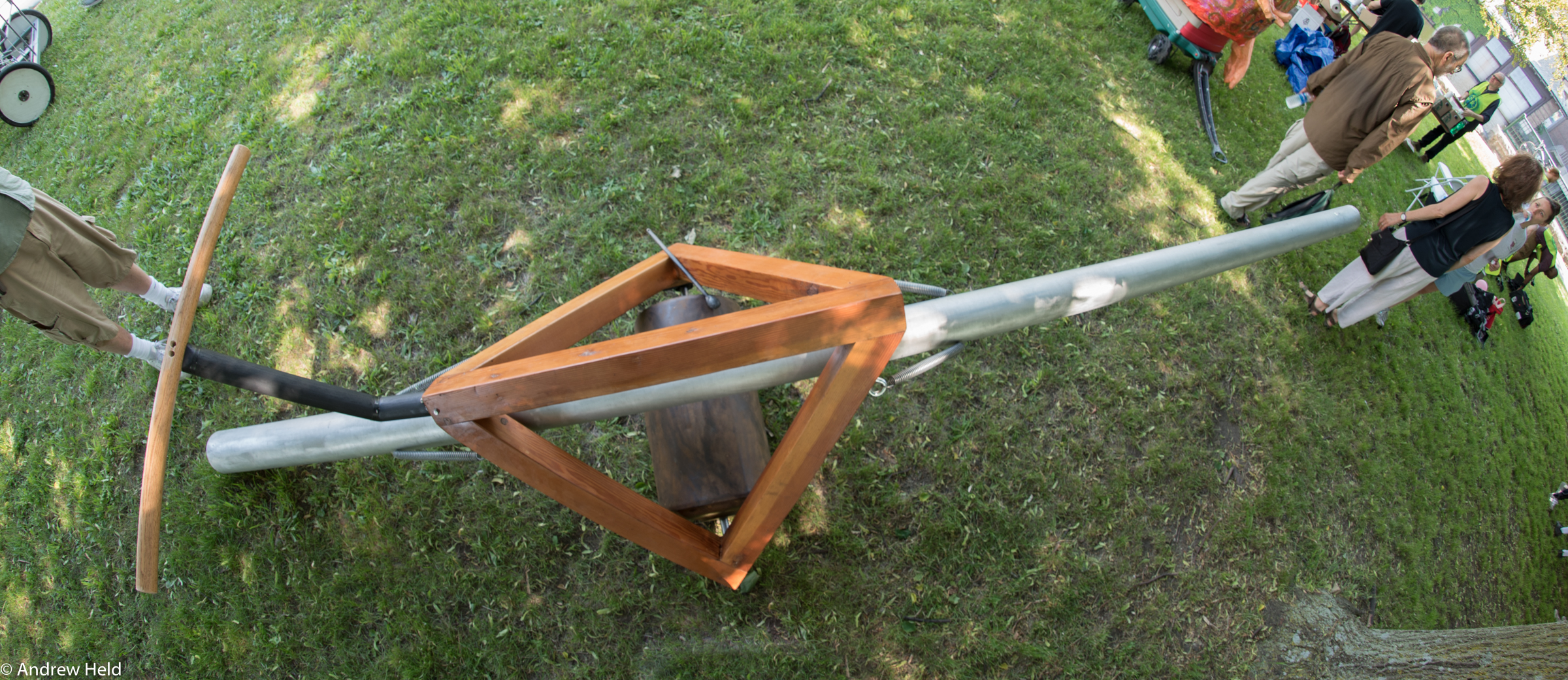
Harmona Roll by Jay Havighurst. Metal xylophone, played while racing.
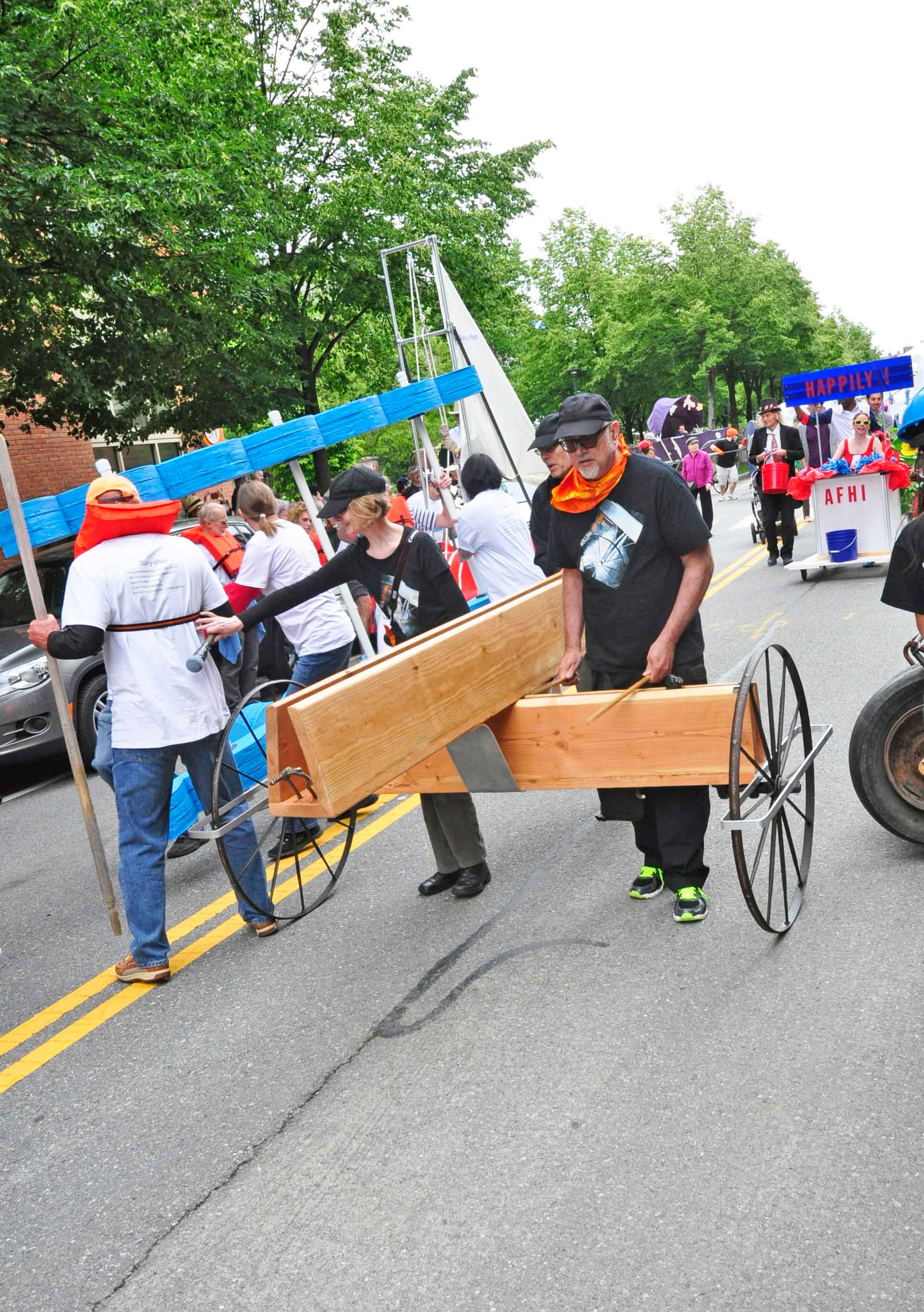
Rolling Slit Gong by Jay Havighurst – played while racing.
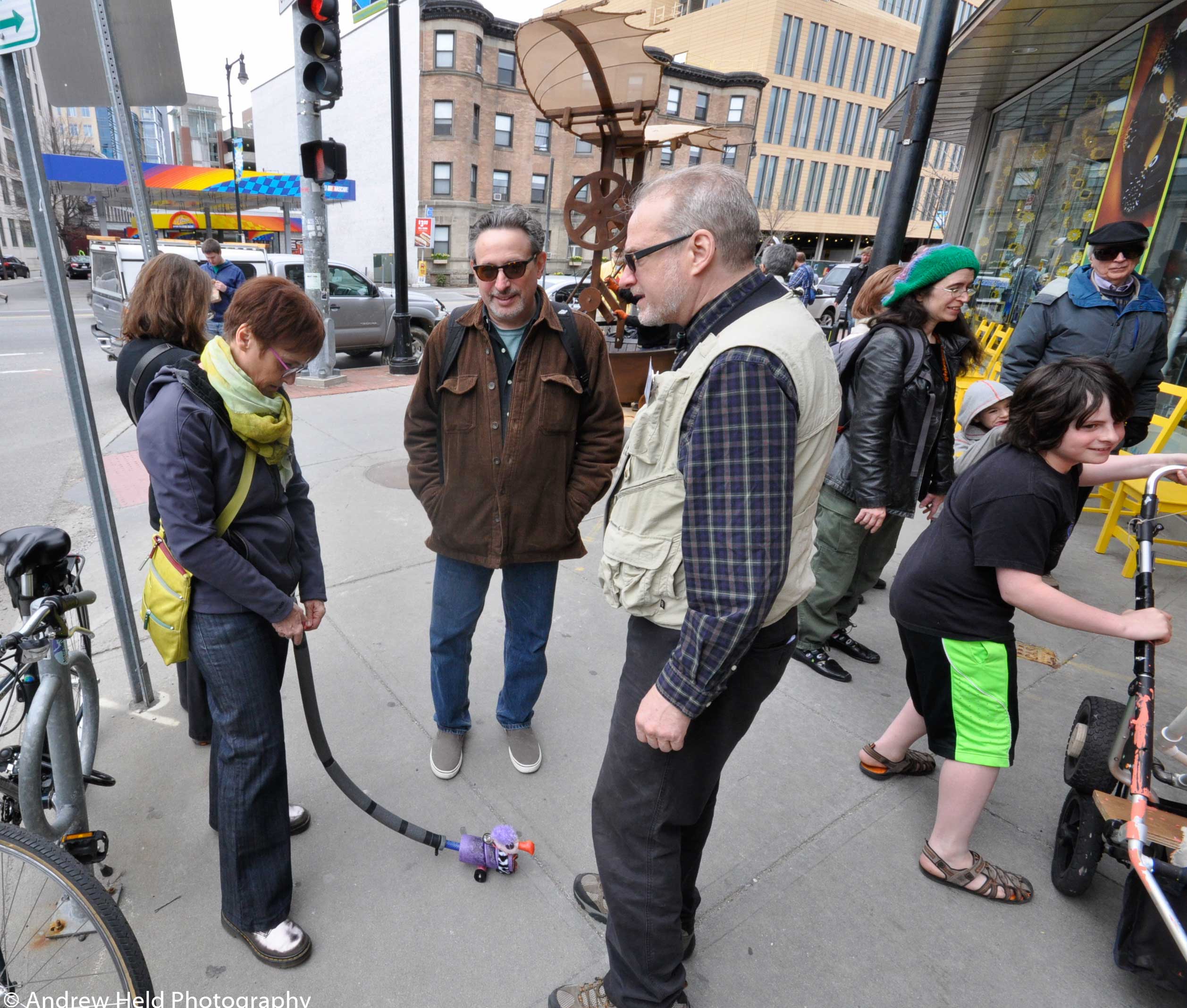
Canard by Jehanne-Marie Gavarini squeaked on command.
Other Concepts
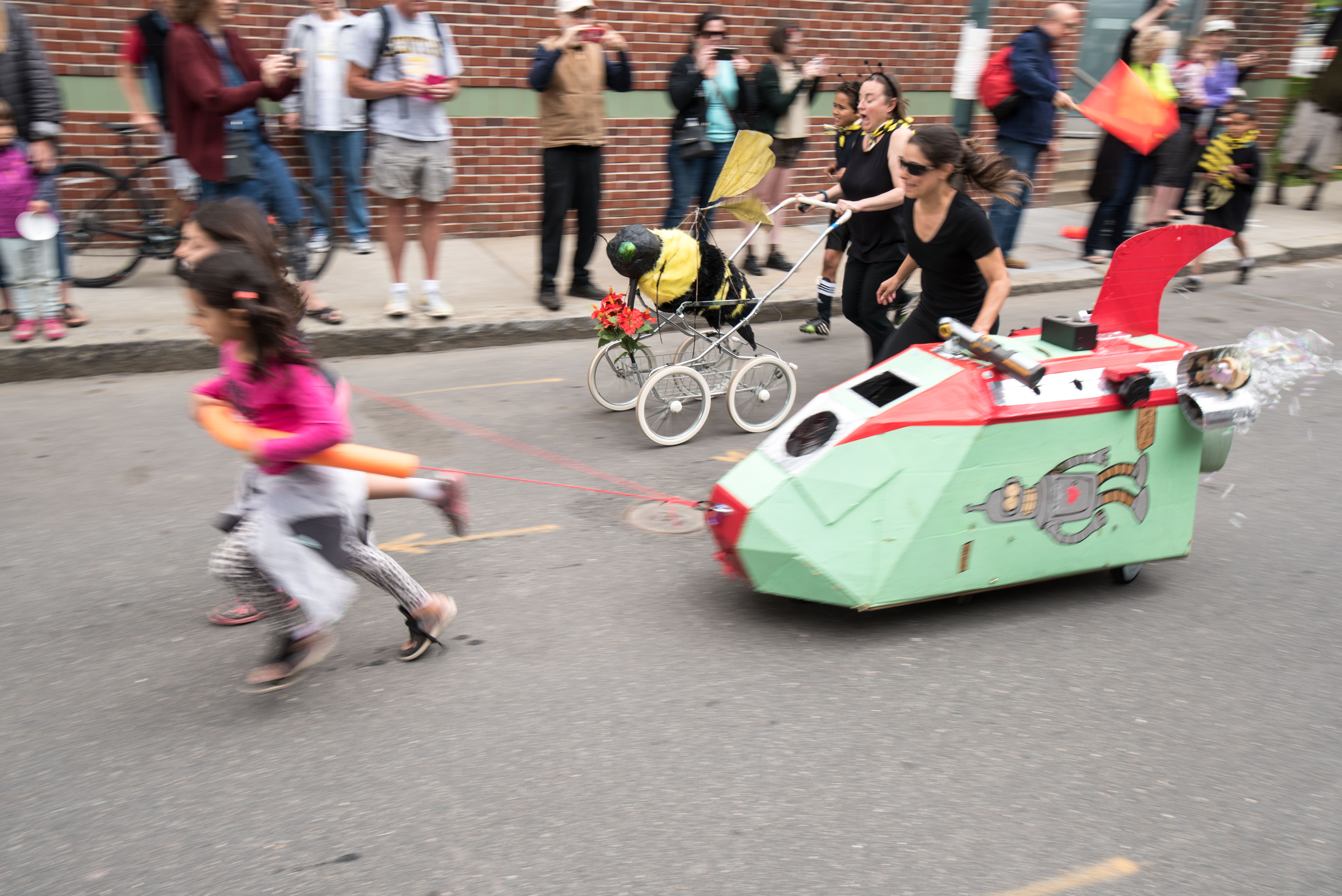
Rocket Express 2.0, by the Fornasaro Family. Originally a participant in the Community Sculpture Race, the family entered Rocket Express for the River Festival Race. The jurors accepted it contingently, asking that the artists creatively tweak it in some way to make it more interesting. The family installed an entirely new propulsive engine enabling it to run on bubble power and were accepted to the People’s Sculpture Race.
![]() Please see the World Sculpture Racing Society page in the about section for additional design and racing suggestions.
Please see the World Sculpture Racing Society page in the about section for additional design and racing suggestions.